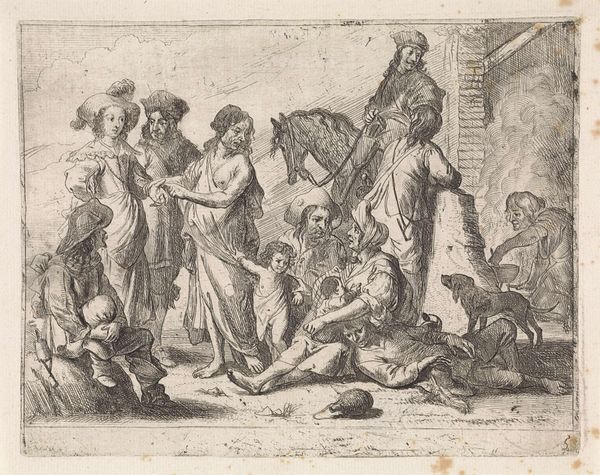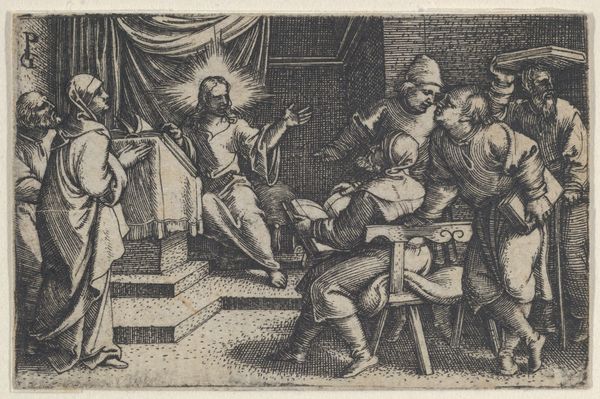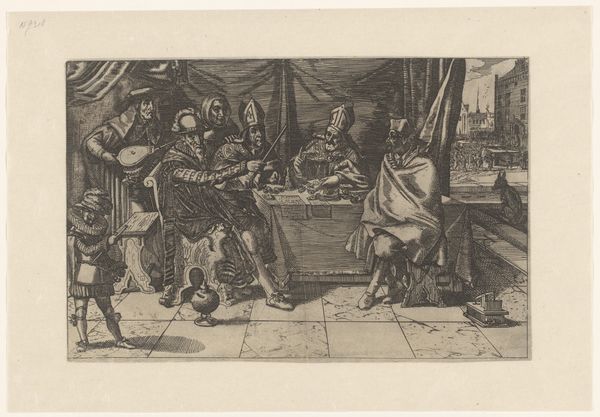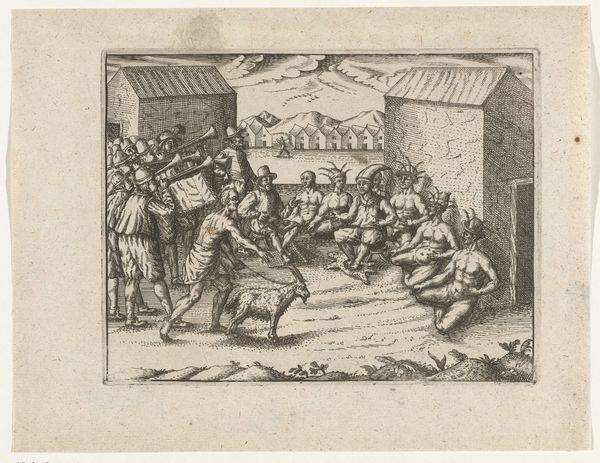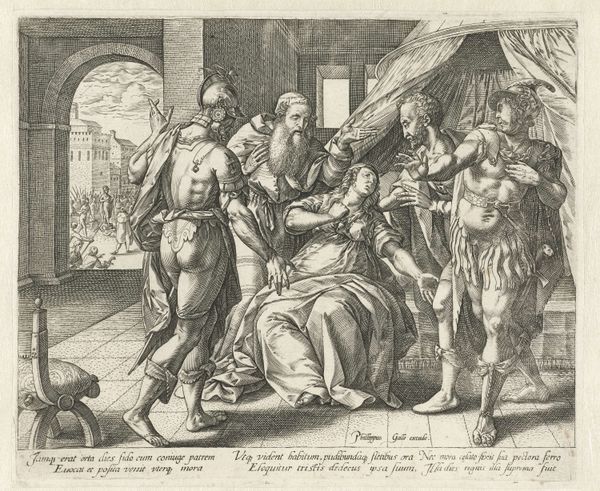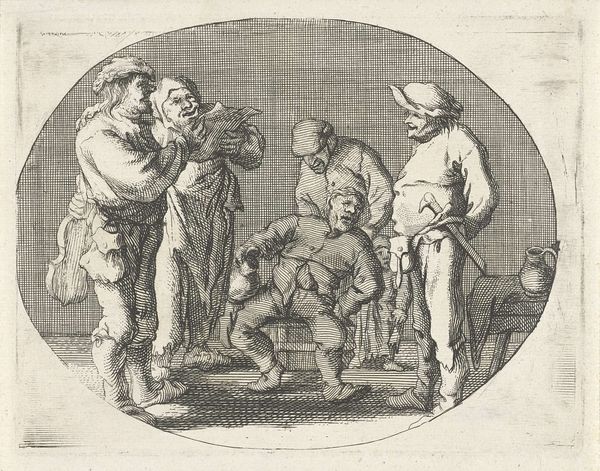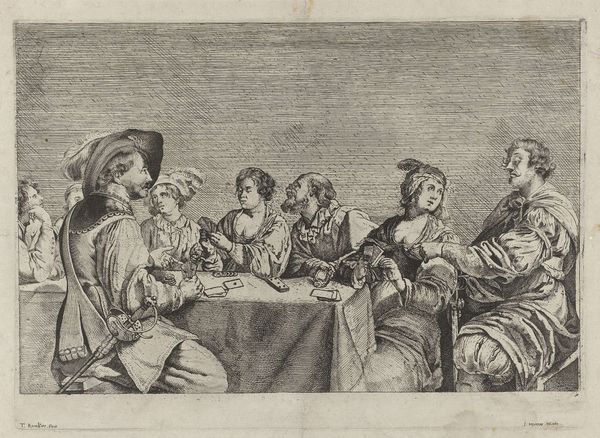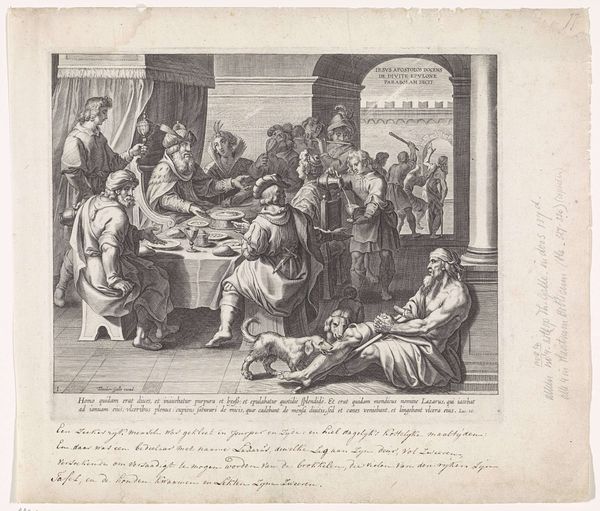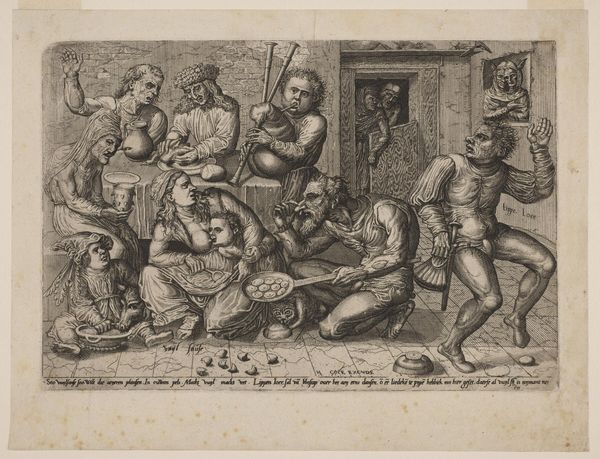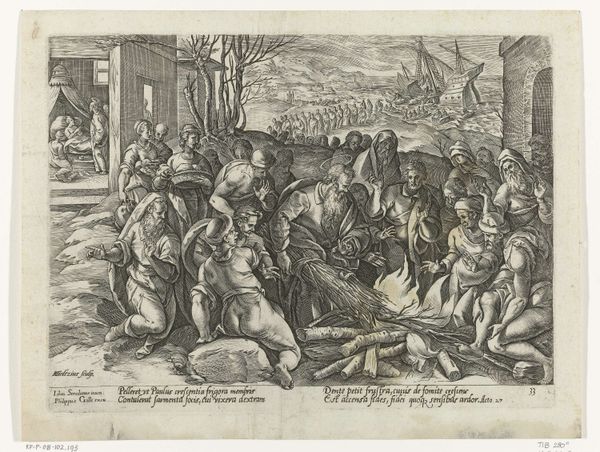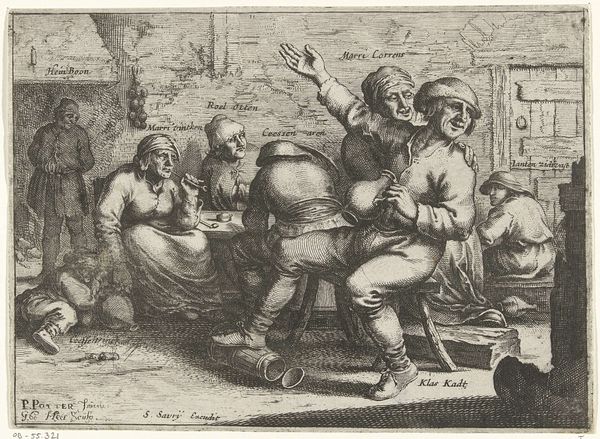
print, intaglio, engraving
# print
#
intaglio
#
mannerism
#
11_renaissance
#
history-painting
#
engraving
Dimensions: height 224 mm, width 352 mm
Copyright: Rijks Museum: Open Domain
This engraving depicts Christ in the House of Simon the Pharisee, and was made with simple tools, most likely by an anonymous Dutch artist. Engraving is an intaglio printmaking technique, which means the image is incised into a plate with a tool called a burin. The incised lines hold ink, and are transferred to paper under high pressure. The technique allows for fine detail and tonal variation, which you can see if you look closely at the drapery, and interior setting. The artist would have needed to be highly skilled in order to manipulate the burin with precision, and create subtle gradations of light and shadow. Engravings like this one were often produced for commercial purposes, for dissemination among a wide audience. Prints were a way of circulating images and ideas, at a time before photography and mass media. The act of engraving and printing itself involved labor, skill, and technology. It played an important role in the economy of art, and in the spread of cultural and religious narratives. Examining the materials and methods used to create an artwork allows us to see how social and cultural forces have shaped its production and reception.
Comments
No comments
Be the first to comment and join the conversation on the ultimate creative platform.
